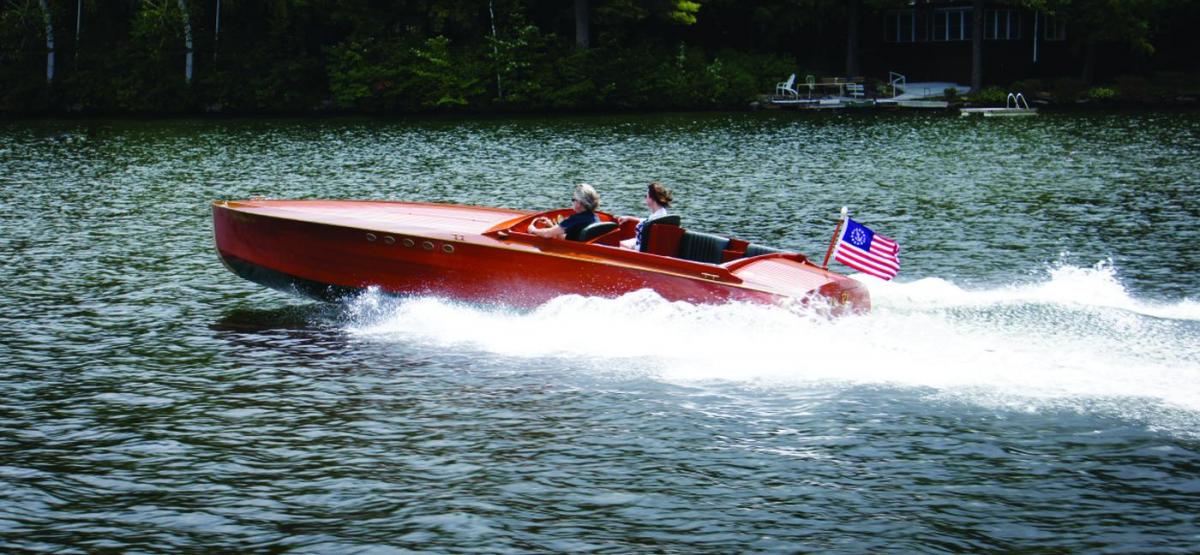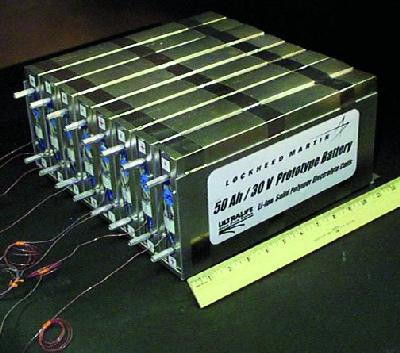On Making a 50-knot Electric Speedboat:
It’s been a long and winding electric road.
We first got involved in using batteries to drive a boat on our hybrid Zogo back in 2009. Still — almost ten years later — the electric revolution is still “just over the horizon.” We continue to consult for practical cross-platform propulsion systems in our client’s boats. We have a custom lobster boat coming that will feature just such a system. We’re following the hybrid power wave in European harbors. And we keep tinkering with ideas to see if the calculus of electrons in boats is changing. So we wanted to see what happened if we took a truly high-performance internal-combustion design and juiced it up for for pure all-electric power.

We started with a design we trust called Stella Blue. She’s our 24-foot classic speedboat, built from the ground-up to be a 50-knot boat: There’s the corvette V-8 engine, the 400-plus-horsepower, the deep-vee bottom: She is the serious business of speed.
Wouldn’t it be amazing if we could keep all that performance but eliminate the stinky exhaust and (admittedly throaty) tailpipe noise? Green and fun was the idea: Let’s look at the performance- and money- side of the all-electric make-over:
The powerplant is easy. If we remove everything needed for gas propulsion, 1,700 pounds magically flies out of a 4,000 pound boat. As well as $34,000 in equipment and labor. We love that! That big stinky internal combustion engine is replaced with a standard electric vehicle motor tuned for speed by electric vehicle race specialists. Our new 400 hp EV powerplant weighs just 420 pounds with gearbox, controller, converter and charger. Nice!
But then we need the batteries. And there’s the rub: Driving a boat with electricity is easy. Carrying that electricity around is not. Today’s batteries have a tiny fraction of the energy density of gasoline or diesel. We need lots of batteries. How many? Old-school lead-acid cells are proven, inexpensive technology. We can put about eight 4-D marine batteries in, for a small weight savings over the IC system of about 200 lb. At 165 amp-hours each, that gives us 16 kilowatt-hours of energy. We can discharge them to 50 percent capacity without damaging the bats. That yields 8 kilowatt hours of usable energy. At full throttle, 400 hp equals about 300 kilowatts. That means, we can run the boat at full throttle for—wait for it—about a minute and a half!
If we give up on wide-open throttle and drive the boat at a nice cruising speed of say 25 knots, energy demands drop. Now we run out of juice after seven minutes — still, a pretty short lap around the lake.
On the plus side, the lead-acid batteries are cheap: $500 per battery, or $4,000 for the full bank. That yields a cheaper boat than the gas version. But, pretty unusable at anything like the performance Stella Blue was designed for.

Our only performance options are state-of-the-art lithium-iron-phosphate batteries. That’s what the Tesla uses. They are light, have higher energy densities. And also can withstand a deeper discharge without damage. For the same weight, our boat can have 64 useable kilowatt hours or about 8 times more than the lead-acid systems. Lithium-iron-phosphate are a mature technology, used in electric vehicles for a decade or more and in marine applications they are moving toward mainstream acceptance. They are also pricey. The set we need runs $32,000. That pushes the cost of our test boat to $10,000 more than the cost of our gas-powered one.
What’s the performance like? At wide-open, she’ll run 15 minutes at 50 knots before putt-putting home at idle (without the “putt-putt” of course). At 25 knots, we’ll get an hour and a quarter. Not so bad for a small lake.
What’s on the electric horizon? Whispers leaking out of the defense community and cutting-edge battery firms are tough to interpret. There is talk of better utilization of current lithium chemistry that might deliver a five-fold improvement in energy density in a few years. But we are doubtful. There are new supercapacitors that might deliver a forty-fold improvement. Either would get this boat really working.
“But wait,” we hear you saying: “There are electric speedboats out there, now—I’ve seen them on European lakes!” Well, we dug a little deeper there, too. Turns out there are European speedboats that are stylish, with retro lines and varnished topsides. There are electric boats, too, spurred by environmental regulations to keep the lakes clean. And some of the electric boats are the same models as the speedboats. But, they are not speedboats. They’ve had large gas engines replaced with very small electric motors. Top speeds are about 18 knots and the range is about one hour. We can match that easily with an e-Stella Blue. But our customers want more power and range.
So, we’ll live with lithium batteries and low run times, and keep our eyes peeled for the new battery tech as it hits the streets.
The electric revolution will be televised — whenever it finally shows up.